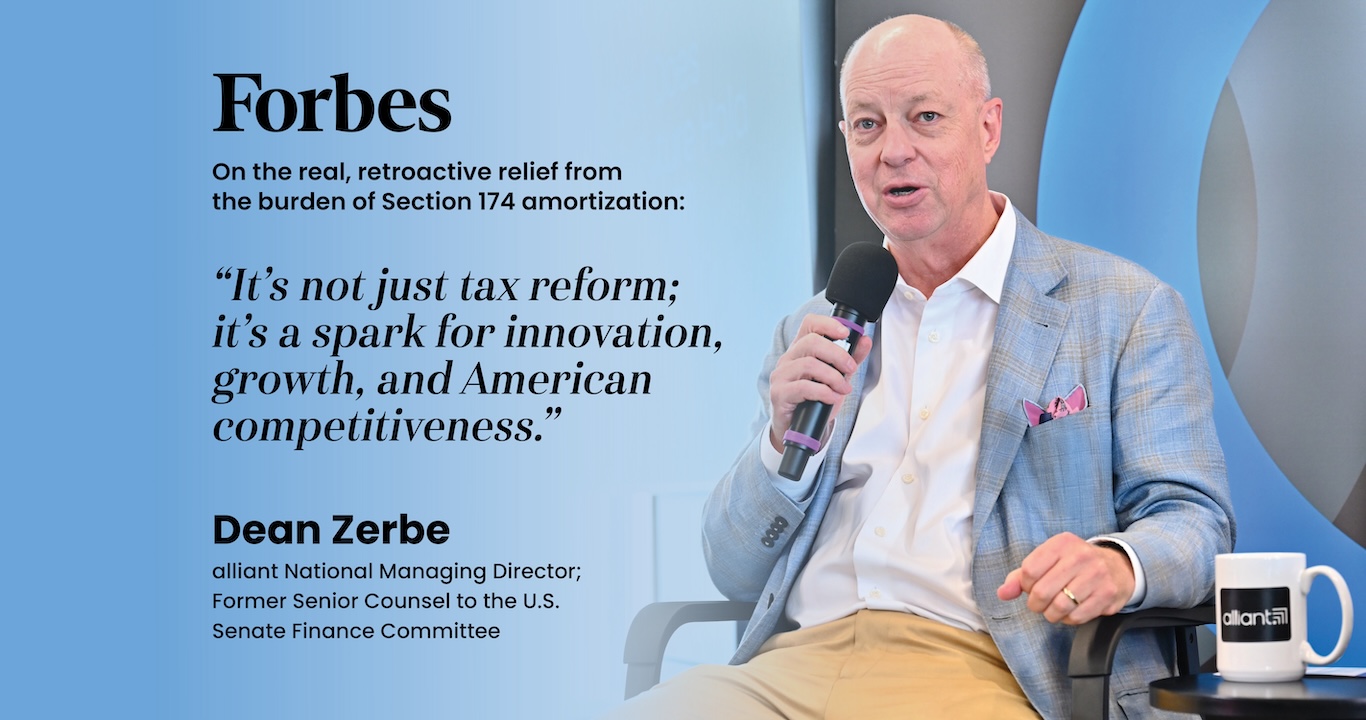PUBLISHED IN
Quotes from Eric Hylton, Former IRS Commissioner of the Small Business/Self Employed Division; alliantgroup National Director
If you have any questions about this article, please send us a message.
The Internal Revenue Service is turning to artificial intelligence to help select tax returns to audit and narrow the tax gap, but it needs to use this new technology consistently and transparently, according to a new government report.
The report, released Wednesday by the Government Accountability Office, noted that taxpayers voluntarily paid 85% of taxes they owed on time in 2014-2016, but the other 15% of taxes they owed, amounting to an estimated $496 billion, made up what’s referred to as the “tax gap.” Most of that tax gap is because taxpayers are underreporting the amount of taxes they owe.
“To estimate part of the tax gap, the IRS audits a random sample of tax returns based on certain characteristics — such as whether the taxpayer is self-employed,” said the report. “The agency has recently piloted a new AI method to select taxpayers for audits. However, it hasn’t documented key components and technical specifications of this AI. We recommended that it do so to ensure that the IRS is being consistent and transparent with its AI use.”
The report noted that the IRS is implementing artificial intelligence models that have the potential to help the agency select audits as part of its National Research Program more efficiently. “However, it is important that IRS document elements of the AI models as it moves forward to ensure that key model components, technical specifications, model updates, and model performance are clearly communicated and assessed,” said the report.
In developing its estimates of the tax gap, the IRS is applying a statistical technique to its National Research Program audit data to account for noncompliance that wasn’t detected by its examiners during audits. Applying such a technique nearly doubles the individual underreporting tax gap estimate, increasing the estimate from $145 billion to $278 billion. However, the IRS has not done an analysis to understand the causes of this estimate of undetected noncompliance. If it did such an analysis, the IRS would be in a better position to help improve the reliability of and confidence in the adjustment and potentially examiners’ detection of noncompliance, according to the GAO.
The IRS is piloting a new process for sampling tax returns for the NRP’s audits. The new process leverages AI to improve the efficiency and selection of audit cases to help identify noncompliance. However, the IRS has not finished its documentation of several elements of its AI sample selection models, including the key components and technical specifications. Completing that documentation would help the IRS retain organizational knowledge, ensure the models are implemented consistently, and make the process more transparent to future users, according to the report.
The IRS recently announced plans to ramp up its audits of large corporations and partnerships as well as wealthy individuals, using funding from the Inflation Reduction Act, as part of its updated strategic operating plan. However, the plan is not clearly linked to tax gap data, the GAO pointed out. For example, it doesn’t address sole proprietor noncompliance, which is one of the biggest areas of tax noncompliance.
The IRS also still hasn’t addressed an earlier recommendation from the GAO to link data from its National Research Program to its compliance efforts. As IRS develops implementation plans for the initiatives and projects in its strategic operating plan, the GAO sees an opportunity for the IRS to further integrate a significant source of evidence to refine its compliance strategies and address the recommendation. Linking the IRS’s compliance strategies with that kind of data would help provide assurance that the IRS is effectively allocating its enforcement resources.
The GAO made six recommendations to the IRS in the report, suggesting the IRS should conduct additional analyses to understand the root causes of undetected noncompliance and complete its documentation related to the pilot process for sampling returns. It should ensure it has complete documentation on how to update the National Research Program sample selection process in response to changes in the operating environment, including the performance of its AI models and risk level analysis, as well as complete documentation on processes for assessing the results of AI model updates, including validating the models.
The IRS agreed with all six of the GAO’s recommendations and described the steps it plans to take in response to each recommendation.
“We agree that there is always room for improving existing technical documentation to make it more accessible, and we recognize the importance of formally documenting analyst and management decisions,” wrote IRS chief operating officer Melanie Krause in response to the report. “We will incorporate your recommendations moving forward.”
AI technology has been in development for several years by the IRS. “I’m a big fan of artificial intelligence and machine learning,” said Eric Hylton, a former commissioner of the IRS’s Small Business/Self-Employed division and deputy chief of the IRS’s Criminal Investigation division who is now national director of compliance at the tax consulting firm alliantgroup, in a recent interview with Accounting Today.
“There are definitely some areas that need improvement. In any particular system, ‘garbage in, garbage out,’ so you have to make sure that you’re actually doing quality control over the information that you actually put into your system. However, it allows the service to be a lot more efficient. You can have analytics related to areas of noncompliance.”
He noted that when he was the SB/SE commissioner and working with CI, one of the things they would like to do before sending a referral to CI would be to analyze, based on previous referrals, which ones actually led to a successful prosecution.
“You can use artificial intelligence and predictive analytics to be able to analyze that input and take those factors, and then place them over your current inventory and see if there are cases that you should be recommending for referrals to Criminal Investigation,” said Hylton.
AI can also save time from an auditing standpoint, he noted, as IRS examiners generally ask 10 or 15 different questions related to particular industries. Fears about AI “hallucinations” may not be a problem in such instances, but the IRS will still need to rely on human expertise.

“Obviously you need human presence, knowledge and skills, but there’s a lot of ways artificial intelligence could be helpful,” said Hylton.
Featured Leadership

Eric Hylton held several prominent positions at the IRS, including serving as Deputy Chief of the Criminal Investigation Division and as CI’s head of International Operations. As National Director of Compliance, Eric employs his years of experience at the IRS to assist alliantgroup’s clients as an ambassador for U.S. small and medium sized businesses (SMBs) and in helping others become tax compliant.



